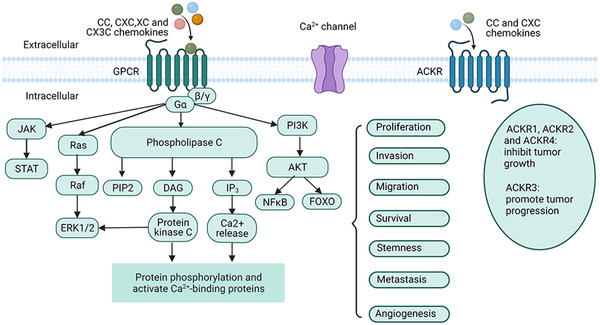FIGURE 2.

Chemokines/chemokine receptors signaling pathways. Chemokines transmit cellular signals by interacting with chemokine receptors, which are expressed on the cell surface as 7‐transmembrane proteins. Almost all types of chemokines bind to the classical G protein‐coupled receptor (GPCR), and activation of G proteins leads to subsequent activation of phospholipase C (PLC). PLC then cleaves a molecule called phosphatidylinositol‐bisphosphate (PIP2) into inositol triphosphate (IP3) and diacylglycerol (DAG); DAG activates protein kinase C, whereas IP3 triggers the intracellular release of stored calcium. Chemokines also activate the JAK/STAT, Ras/Raf/ERK, and PI3K/AKT signaling pathways through the GPCR signaling cascade. These events have an important role in cancer biology, involving tumor cell proliferation, invasion, metastasis, and angiogenesis. The atypical chemokine receptors (ACKRs) do not induce immune cell movement due to their structural inability to bind G proteins, rather their main function is to regulate the concentrations and bioavailability of chemokines on both sides of the cell membrane (the figure was created using biorender.com)
